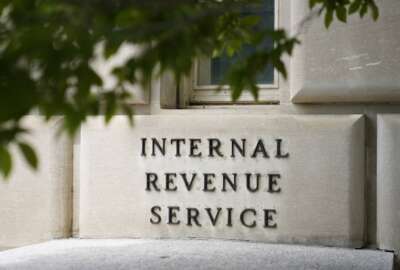President’s 2013 budget focuses on federal performance, cuts to waste
The President\'s fiscal 2013 budget requests calls on agencies to \"redouble\" efforts to cut wasteful spending through government reorganization and cuts to im...
The President’s fiscal 2013 budget request calls on agencies to “redouble” efforts to cut wasteful spending through emphasizing performance-based results, reorganizing federal agencies and cutting improper payments.
Government reorganization
The President announced last month he would seek authority from Congress to consolidate agencies.
The budget request reiterates the President’s intent to merge six business and trade agencies, absorbing the Commerce Department’s core business and trade functions, the Small Business Administration, the Office of the U.S. Trade Representative, the Export-Import Band, the overseas Private Investment Corporation and the U.S. Trade and Development Agency, the request said.
“By bringing together the core tools to expand trade and investment, grow small businesses, and support innovation, the new department could coordinate these resources to maximize the benefits for businesses and the economy,” the request said.
Previous presidents had this authority until 1984.
Performance-based results
The budget request calls for evidence- and data-based results for programs.
“The federal fiscal situation necessitates doing more with less, not only to reduce budget deficits, but to build confidence that Americans are receiving maximum value for their hard-earned tax dollars,” the budget request said.
The Office of Personnel Management will also survey all federal employees this year for the Employee Viewpoint Survey. Last year, OPM only surveyed a sampling of the federal workforce. These results will help identify areas of “personnel management strength and weakness,” the request said.
The budget request also pointed to the January 2012 roll-out of a Senior Executive Service performance appraisal system, which will give agencies a “consistent and uniform framework … to communicate expectations and evaluate performance of SES members.”
Cut improper payments
In the summer of 2010, President Obama set a goal of cutting improper payments by $50 billion by 2012.
The Office of Management and Budget reported in November 2011 that the improper error rate had dropped to 4.7 percent in 2011 from 5.3 percent in 2010. Over the last two years, improper payments were cut by $20 billion — still short by $30 billion of the President’s goal.
OMB is testing a fraud detection and prevention tool through GoVerify.gov.
Civilian BRAC
The federal government owns and manages more than 1.1 million buildings and structures, making it the largest property owner and manager in the country, the request said.
Modeled after the Defense Department Base Realignment and Closures, the administration proposed continuing efforts for a civilian version of BRAC. In 2010, President Obama had directed agencies to speed up the elimination of unused or underutilized federal properties to achieve $3 billion in savings by the end of 2012. According to the request, agencies have saved more than $3 billion to date.
However, the government still has too much “red tape” to continue speedily shedding unneeded properties. In its 2012 budget request, the White House had proposed creating a panel to examine and consolidate federal properties.
That proposal has been advanced in the House, which passed a bill last week that sets up a civilian BRAC commission that would make recommendations to the President and Congress on disposing federal buildings.
RELATED STORIES
Tightening budgets renew OMB’s push for IT project oversight
White House doesn’t support sequestration, sees it as forcing function
2013 budget: Agency-by-agency breakdown
Pay raise, increased retirement contributions in President’s FY2013 budget request
DoD budget would quadruple TRICARE fees for higher-earning retirees
2013 budget analytical perspectives (pdf)
GPO develops app to view budget
Legislative agencies’ 2013 budget requests spell reduced staff and cuts
Copyright © 2024 Federal News Network. All rights reserved. This website is not intended for users located within the European Economic Area.





